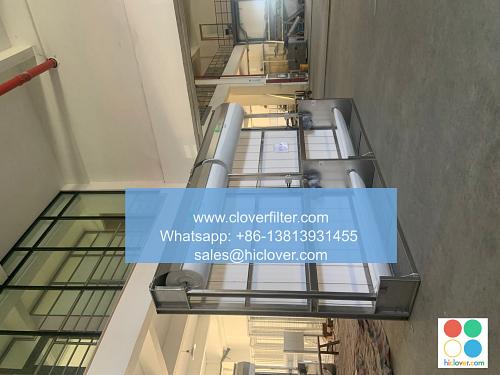Air Filter Quality Control in Public Libraries

Public libraries are essential community hubs where people of all ages gather to access information, attend events, and engage in various activities. However, with a large number of people frequenting these spaces, the indoor air quality (IAQ) can become compromised, posing health risks to patrons and staff. One critical component of IAQ management is air filter quality control, which plays a vital role in maintaining a healthy and comfortable environment.
Importance of Air Filter Quality Control
Effective air filter quality control is essential in public libraries to prevent the spread of airborne pollutants, such as particulate matter (PM), nitrogen dioxide (NO2), ozone (O3), and volatile organic compounds (VOCs). These pollutants can emanate from various sources, including heating, ventilation, and air conditioning (HVAC) systems, building materials, furniture, and human activities. By implementing a robust air filter quality control program, libraries can minimize the risks associated with poor IAQ, such as respiratory problems, allergic reactions, and decreased productivity.
Key Application Areas
Air filter quality control is applicable in various areas of public libraries, including:
* Reading rooms: Where patrons spend extended periods, and the air quality can significantly impact their comfort and health.
* Children’s sections: Where young children, who are more susceptible to airborne pollutants, often gather for storytime and other activities.
* Meeting rooms: Where community groups and organizations hold events, and the air quality can affect the health and productivity of attendees.
* Staff areas: Where library employees work, and poor IAQ can lead to decreased job satisfaction, increased absenteeism, and reduced productivity.
Testing and Evaluation Methods
To ensure the effectiveness of air filters in public libraries, regular testing and evaluation are necessary. Some common methods include:
* Particulate matter monitoring: Using instruments such as particle counters or aerosol spectrometers to measure PM concentrations.
* Gaseous pollutant monitoring: Using devices such as gas detectors or sensors to measure NO2, O3, and VOC levels.
* Air filter testing: Using standardized protocols, such as ASHRAE 52.2, to evaluate filter performance and efficiency.
* Visual inspections: Regularly inspecting air filters for signs of wear, damage, or contamination.
Standards and Guidelines
Public libraries can refer to various standards and guidelines to ensure their air filter quality control programs meet the required standards. Some notable resources include:
* ASHRAE Standards: Providing guidelines for HVAC system design, installation, and maintenance.
* ISO 16890: Offering a standardized method for testing and evaluating air filter performance.
* EPA Guidelines: Providing recommendations for improving IAQ in buildings, including public libraries.
Best Practices for Air Filter Quality Control
To maintain optimal air filter quality control in public libraries, the following best practices can be implemented:
* Regular filter maintenance: Scheduling regular filter replacements, cleaning, and inspections to prevent degradation.
* Air filter selection: Choosing filters with high efficiency ratings, such as MERV 13 or higher, to capture a wide range of pollutants.
* Filter installation and commissioning: Ensuring proper installation and commissioning of air filters to prevent bypass and minimize pressure drops.
* Staff training and awareness: Educating library staff on the importance of air filter quality control and their role in maintaining a healthy IAQ.
By prioritizing air filter quality control, public libraries can create a healthier, more comfortable environment for patrons and staff, ultimately enhancing the overall library experience. By following the guidelines and best practices outlined above, libraries can ensure their air filter quality control programs are effective, efficient, and meet the required standards. It appears you haven’t provided a specific question or topic for discussion. Could you please provide more details or clarify what you would like to talk about? This will help me give you a more accurate and helpful response.

